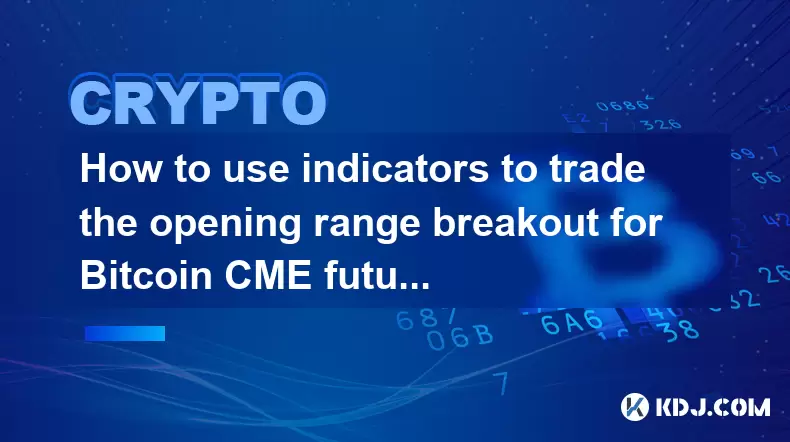-
 Bitcoin
Bitcoin $117900
0.31% -
 Ethereum
Ethereum $3766
0.28% -
 XRP
XRP $3.176
-0.31% -
 Tether USDt
Tether USDt $1.000
0.00% -
 BNB
BNB $795.6
1.51% -
 Solana
Solana $186.8
-1.09% -
 USDC
USDC $0.9999
-0.01% -
 Dogecoin
Dogecoin $0.2353
-1.33% -
 TRON
TRON $0.3226
1.49% -
 Cardano
Cardano $0.8172
-1.08% -
 Sui
Sui $4.178
3.06% -
 Hyperliquid
Hyperliquid $43.05
-3.39% -
 Stellar
Stellar $0.4367
-0.57% -
 Chainlink
Chainlink $18.62
1.47% -
 Hedera
Hedera $0.2828
6.63% -
 Bitcoin Cash
Bitcoin Cash $584.7
5.65% -
 Avalanche
Avalanche $24.81
2.53% -
 Litecoin
Litecoin $112.8
-0.88% -
 UNUS SED LEO
UNUS SED LEO $8.975
-0.08% -
 Shiba Inu
Shiba Inu $0.00001395
-1.07% -
 Toncoin
Toncoin $3.285
-1.05% -
 Ethena USDe
Ethena USDe $1.001
0.01% -
 Polkadot
Polkadot $4.123
0.76% -
 Uniswap
Uniswap $10.49
-0.18% -
 Monero
Monero $326.5
0.14% -
 Dai
Dai $0.9999
-0.02% -
 Bitget Token
Bitget Token $4.576
0.34% -
 Pepe
Pepe $0.00001247
-1.55% -
 Cronos
Cronos $0.1400
3.77% -
 Aave
Aave $295.1
-0.73%
Probability of direction selection after the convergence of the BTC symmetrical triangle
"New study reveals significant impact of climate change on global biodiversity, urging immediate conservation efforts."
Jun 10, 2025 at 02:08 pm

Understanding the BTC Symmetrical Triangle Pattern
A symmetrical triangle pattern in Bitcoin (BTC) price charts is a common technical analysis formation that occurs when the price consolidates between two converging trendlines. The upper trendline connects a series of lower highs, while the lower trendline connects higher lows. As these lines converge, the price movement becomes more confined, indicating indecision in the market.
The key feature of this pattern is its neutrality — it doesn't inherently suggest a bullish or bearish outcome. Instead, it reflects a period of equilibrium between buyers and sellers. The breakout direction — either upward or downward — determines the subsequent trend. Traders often wait for a confirmed breakout before making decisions.
Important: A valid symmetrical triangle must have at least two touches on each trendline, though more touches increase the reliability of the pattern.
Historical Behavior of BTC After Symmetrical Triangle Breakouts
Looking at historical data from multiple BTC chart patterns, we can observe recurring tendencies after the resolution of a symmetrical triangle. While past performance isn't a guarantee of future results, it offers insight into potential outcomes.
In many instances, BTC has shown a tendency to continue its prior trend following a breakout from a symmetrical triangle. This means if the price was trending upward before entering the triangle, the breakout is more likely to be bullish. Conversely, if the preceding trend was bearish, the breakout may follow suit.
Important: The volume during the breakout plays a crucial role in confirming the validity of the move. A strong surge in volume accompanying the breakout increases the probability of a genuine directional move.
Factors Influencing the Direction of the Breakout
Several elements influence whether BTC will break out upwards or downwards after a symmetrical triangle convergence:
- Market Sentiment: If broader market sentiment is positive, even a neutral pattern like a symmetrical triangle may resolve in favor of bulls.
- Volume Patterns: Rising volume near the apex of the triangle can indicate strong participation and hint at the likely breakout side.
- Timeframe of the Chart: Longer timeframes (e.g., daily or weekly charts) tend to produce more reliable breakouts compared to intraday patterns.
- Fundamental News: Events such as regulatory updates, macroeconomic developments, or institutional adoption news can sway the direction unexpectedly.
Important: It's essential to monitor support and resistance levels around the triangle to anticipate possible price reactions post-breakout.
- Check for nearby psychological price levels
- Analyze order book imbalances near the triangle boundaries
- Watch for large whale movements that could trigger a false breakout
Statistical Probability of Breakout Direction
Based on extensive backtesting of BTC's historical chart patterns, the probability of a breakout direction after a symmetrical triangle tends to hover around 50/50. However, certain conditions tilt the odds slightly:
- In bull markets, the probability of an upward breakout increases to approximately 58–62%.
- In bear markets, the likelihood of a downward breakout rises to about 55–60%.
- When the triangle forms mid-trend, continuation is more probable than reversal.
Important: These probabilities are derived from statistical averages and should not be used in isolation for trading decisions.
Traders should combine these insights with other tools such as Fibonacci extensions, moving averages, and oscillators to enhance accuracy.
How to Trade the Symmetrical Triangle Breakout in BTC
Trading a symmetrical triangle requires patience and precision. Here’s how to approach it methodically:
- Identify the pattern early: Draw both trendlines accurately by connecting at least two swing highs and lows.
- Measure volatility contraction: Observe decreasing volatility as the triangle progresses toward the apex.
- Set entry orders: Place buy stop orders just above the upper trendline and sell stop orders below the lower trendline.
- Confirm with volume: Wait for a clear candle close beyond the trendline with increased volume to validate the breakout.
- Manage risk: Set a stop-loss just beyond the opposite side of the triangle to protect against false breakouts.
- Target profit: Use the height of the triangle’s base to project the minimum price move post-breakout.
Important: Avoid chasing entries immediately after a breakout; wait for confirmation through candlestick closes and volume surges.
Frequently Asked Questions (FAQ)
Q1: Can a symmetrical triangle in BTC turn into a reversal pattern?
Yes, although rare. If strong fundamental or macroeconomic factors contradict the prevailing trend, the breakout can go against the prior direction.
Q2: How long does a typical BTC symmetrical triangle last?
Most BTC symmetrical triangles on the daily chart last between 7 to 21 trading sessions. Shorter durations may result in less reliable signals.
Q3: What indicators work best with symmetrical triangle analysis in BTC?
Combining volume indicators (like On-Balance Volume), momentum oscillators (RSI or MACD), and volatility measures (ATR) enhances decision-making.
Q4: Should traders enter immediately upon breakout or wait for a retest?
It depends on strategy. Aggressive traders may enter at breakout, while conservative ones wait for a retest of the broken level for better confirmation.
Disclaimer:info@kdj.com
The information provided is not trading advice. kdj.com does not assume any responsibility for any investments made based on the information provided in this article. Cryptocurrencies are highly volatile and it is highly recommended that you invest with caution after thorough research!
If you believe that the content used on this website infringes your copyright, please contact us immediately (info@kdj.com) and we will delete it promptly.
- Cryptos to Watch in 2025: Punisher Coin, Chainlink, and the Altcoin Arena
- 2025-07-27 18:30:13
- Bitcoin, Altcoins, Rebound: Navigating the Crypto Comeback Trail
- 2025-07-27 18:30:13
- Ethereum, Bitcoin, and Altcoins: A Shift in Crypto Tides?
- 2025-07-27 19:10:13
- Windtree Therapeutics' Bold BNB Strategy: A $520 Million Crypto Play
- 2025-07-27 19:10:13
- Solana, Staking, and Unilabs: What's the Buzz in the Crypto Space?
- 2025-07-27 16:50:13
- VeChain, HBAR, Remittix: Navigating the Crypto Landscape in 2025
- 2025-07-27 17:10:12
Related knowledge

What is the significance of the 21-week EMA in a Bitcoin bull market?
Jul 10,2025 at 06:56pm
Understanding the 21-Week EMA in Cryptocurrency AnalysisThe 21-week Exponential Moving Average (EMA) is a technical indicator widely used by traders a...

How to identify a volatility contraction pattern on Bitcoin using indicators?
Jul 07,2025 at 07:28am
What is a Volatility Contraction Pattern in Bitcoin Trading?A volatility contraction pattern refers to a phase where the price movement of an asset, s...

Do indicators work better on a logarithmic or linear scale for Bitcoin's long-term chart?
Jul 08,2025 at 01:42pm
Understanding Chart Scales in Cryptocurrency TradingIn cryptocurrency trading, particularly for analyzing Bitcoin's long-term trends, chart scales pla...

What is the Woodies CCI indicator and can it be used for Bitcoin?
Jul 04,2025 at 05:14pm
Understanding the Woodies CCI IndicatorThe Woodies CCI indicator is a variation of the traditional Commodity Channel Index (CCI), which was originally...

How to use indicators to trade the opening range breakout for Bitcoin CME futures?
Jul 05,2025 at 07:35pm
What Is the Opening Range Breakout Strategy?The opening range breakout (ORB) strategy is a popular trading technique used in both traditional markets ...

How to use the Relative Vigor Index (RVI) for Bitcoin trading?
Jul 07,2025 at 02:00pm
Understanding the Relative Vigor Index (RVI)The Relative Vigor Index (RVI) is a technical analysis tool used to assess the strength of price movements...

What is the significance of the 21-week EMA in a Bitcoin bull market?
Jul 10,2025 at 06:56pm
Understanding the 21-Week EMA in Cryptocurrency AnalysisThe 21-week Exponential Moving Average (EMA) is a technical indicator widely used by traders a...

How to identify a volatility contraction pattern on Bitcoin using indicators?
Jul 07,2025 at 07:28am
What is a Volatility Contraction Pattern in Bitcoin Trading?A volatility contraction pattern refers to a phase where the price movement of an asset, s...

Do indicators work better on a logarithmic or linear scale for Bitcoin's long-term chart?
Jul 08,2025 at 01:42pm
Understanding Chart Scales in Cryptocurrency TradingIn cryptocurrency trading, particularly for analyzing Bitcoin's long-term trends, chart scales pla...

What is the Woodies CCI indicator and can it be used for Bitcoin?
Jul 04,2025 at 05:14pm
Understanding the Woodies CCI IndicatorThe Woodies CCI indicator is a variation of the traditional Commodity Channel Index (CCI), which was originally...

How to use indicators to trade the opening range breakout for Bitcoin CME futures?
Jul 05,2025 at 07:35pm
What Is the Opening Range Breakout Strategy?The opening range breakout (ORB) strategy is a popular trading technique used in both traditional markets ...

How to use the Relative Vigor Index (RVI) for Bitcoin trading?
Jul 07,2025 at 02:00pm
Understanding the Relative Vigor Index (RVI)The Relative Vigor Index (RVI) is a technical analysis tool used to assess the strength of price movements...
See all articles

























































































